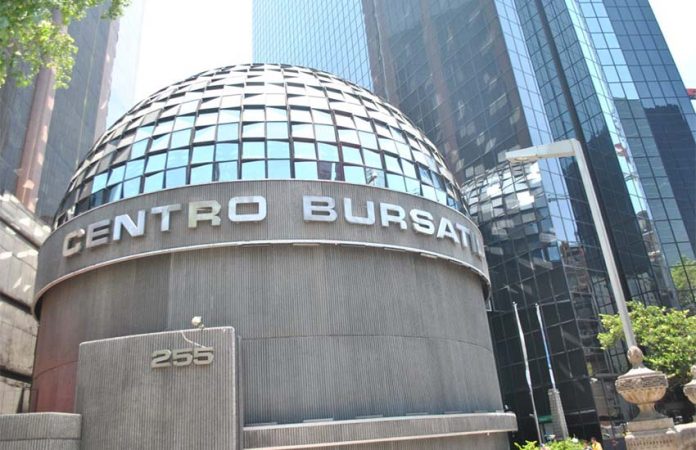As financial turmoil shook the United States, Mexican banks had a bad day on the stock market on Monday but are in good health overall, according to analysts and the head of an industry group.
The value of banks listed on the Mexican Stock Exchange (BMV) dropped Monday in the wake of the recent failures of the California-based Silicon Valley Bank (SVB) and the New York-based Signature Bank.
Santander México shares suffered the biggest slump, declining 5.38%, while Gentera stocks fell 4.66%. Among the other bank shares that took hits on Monday were those of Banco del Bajio (-3.54%), Banorte (-2.17%), and Banregio (-1.94%).
The newspaper El Economista reported that the collective value of BMV-listed banks declined 16.45 billion pesos (about US $883.7 million).
Jacobo Rodríguez, director of analysis at the investment company Black WallStreet Capital, attributed the fall in the value of bank stocks to “contagion in the mood of investors.”
In other words, U.S. investors’ negative outlook spread south of the border. However, expressing a view shared by other analysts, Rodríguez said that Mexican banks “are not in a bad situation.”

Jorge Sánchez Tello, Director of the Applied Research Program at the Foundation of Financial Studies, based at the National Autonomous Technological Institute (ITAM), stated that the Mexican banking system is solid and that the failure of SVB isn’t affecting Mexico because the bank had no business interests in Mexico.
Gabriela Siller, director of economic analysis at Banco Base, tweeted that the collapse of SVB wasn’t expected to generate a “contagion effect to the banking system of Mexico.”
“Regulation is stricter in Mexico, which is why contagion to Mexico was avoided during the 2008 financial crisis in the United States,” she added.
Daniel Becker, president of the Association of Mexican Banks, said in a radio interview that local banks are in a strong position.
“Due to regulation and [banks’] capital levels there is no cause for concern in Mexico today,” Becker said. “We have to be attentive … but Mexicans today should be reassured that banks are in a position of strength that doesn’t put their deposits at risk.”
The news outlet Bloomberg Linea reported that Mexican banks have “adequate levels of capitalization and solvency” and noted that the analysts it consulted believe that Mexican banks are in a “solid” position.
In a report published last November, the International Monetary Fund (IMF) noted that “Mexico has a robust financial system” that “appears resilient to severe macrofinancial shocks.”
For many years, Mexican banks “have maintained high capital and liquidity buffers,” the report stated.
The value of the Mexican peso, which traded below 18 to the U.S. dollar in early March, fell about 2.5% on Monday as investors’ appetite for risk assets waned amid the events in the U.S., but the currency recovered some of its losses on Tuesday morning.
In the early afternoon, one dollar was worth about 18.60 pesos, according to currency conversion website xe.com.
With reports from Bloomberg Linea, El Economista, El Financiero, López-Doriga Digital and Reuters
